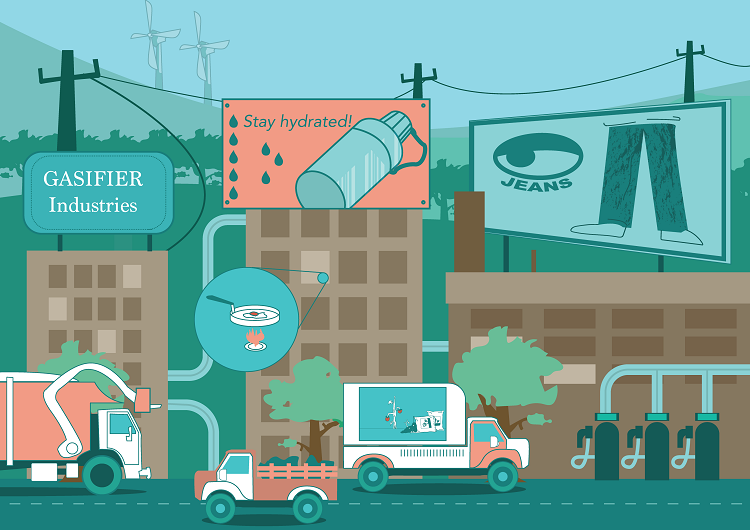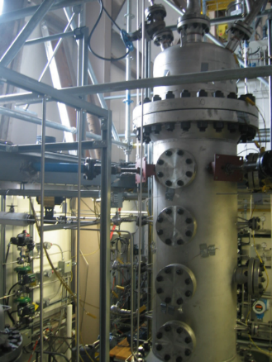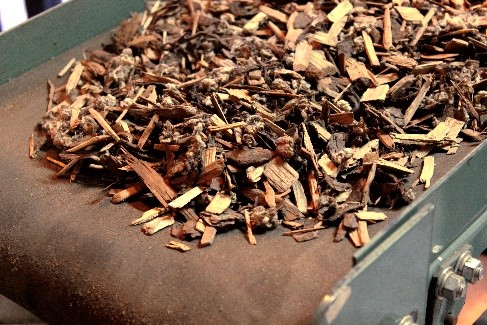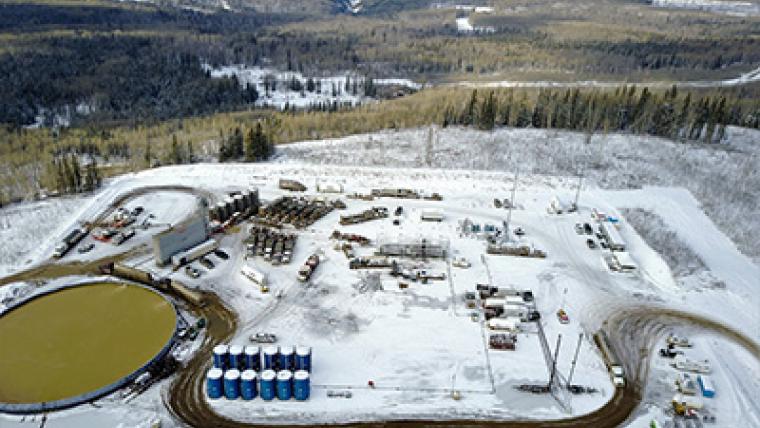Can fuel be carbon-negative?
Explore how Natural Resources Canada (NRCan) researchers are combining existing energy technology with new, cleaner energy advancements. Could carbon-negative fuels be far behind?
May 2022
by Sarah Buckingham
What fuels you?
Fuels power our daily lives, from the vehicles that transport our food and deliver online orders, to heating and cooling our homes and powering the businesses we support, and much more. In fact, you interact with fuels a lot more than you might realize.
But have you ever wondered: How are fuels made? What are they made of? What is the environmental impact? Is there a different way of doing things? For experts at CanmetENERGY in Ottawa, questions like these fuel their work.

We don’t have to look far to see how fuel impacts our daily lives. In the pursuit of cleaner energy, researchers are turning their attention to alternative ways to reduce greenhouse gas (GHG) emissions from the fuel production process.

This high-pressure, pilot-scale gasifier at CanmetENERGY in Ottawa is over 1.5 metres tall. Full-scale gasifiers used by fuel producers can reach over 12 metres, or almost three storeys tall, and four metres across.
Gasifiers: offering new possibilities through versatility
One way to make some of the fuels used in Canada and around the world is through a process called gasification. This technique involves taking a feedstock made of a carbon-based material, such as biomass, and putting it through a series of chemical reactions to produce gaseous fuels. The process occurs inside a gasifier, a high-temperature chamber designed specifically for this purpose.
Gasifiers are not new; in fact, they’ve been around since the 1790s. “In earlier days, gasification produced town gas, which was used much like natural gas is used today,” says research scientist Marc Duchesne, PhD. However, their use has evolved over time, with increased attention paid to the process during certain moments in history. “Increasing interest in research and development on gasification can be linked to historical events such as the Second World War, the oil crisis of the 1970s, and in South Africa during the apartheid era after oil sanctions were imposed. Today, though, we can use gasification to turn waste into fuels with environmental benefits,” explains Marc.
From research to real-world impact
NRCan’s CanmetENERGY research centre in Ottawa is a world leader in gasification research, development and demonstration, and has been for over 35 years. One of its most notable contributions has been advancing the entrained flow gasifier, which can handle just about any kind of feedstock including coal, petroleum coke, biomass and even municipal waste.

Biomass, such as forestry byproducts, is one example of a feedstock used in gasifiers to produce fuel and other products.
“Today’s leading technology allows fuel to be produced from both renewable energy sources, like forest waste, and fossil energy sources using the same equipment,” explains research scientist and group leader Robin Hughes, PhD. Being able to use different feedstocks in the same gasifier offers many benefits. For one, production costs are lower since producers don’t need to acquire special equipment to process different types of feedstock. There are also environmental benefits, since producers can use a gasifier to the end of its useful life by substituting fossil feedstocks with renewable ones.
Another important aspect of gasifiers is that they allow for carbon capture, utilization and storage(CCUS). They separate the carbon from the fossil feedstock and turn it to carbon dioxide (CO2) and other chemical outputs early in the process, which means the amount of CO2 entering the atmosphere is significantly reduced. This “pre-combustion carbon capture” approach saves energy and money compared with separating carbon after the fuel has been combusted, also known as “post-combustion carbon capture.”
Reduced GHG emissions
“When the captured CO2 is stored or used in another process, modern gasifiers can reduce greenhouse gas emissions by up to 95 percent,” explains Robin. Captured CO2 can be used to produce products such as fertilizers, food or beverages. There’s also a financial benefit for the producer. “The costs for CCUS are already integrated in the process. This is key because one major barrier of CCUS is the cost for industry to install and operate extra equipment in the process,” he says. “Our research in gasification has directly contributed to eliminating extra equipment and thus to providing advancements in cost reduction.”
Most Canadians will probably never see the gasification process in person, though they likely rely on fuels produced this way. Take the food on your plate, for example. Perhaps a gasifier manufactured the ammonia used in the fertilizer, which fueled the food’s growth. A gasifier may have produced the fuel used by the vehicle that transported the food to the store. Gasifiers can even make renewable natural gas used to cook.
Innovation never stops
CanmetENERGY Ottawa continues to collaborate with Canadian and international stakeholders to advance biomass gasification combined with CCUS, which has the potential to be a CO2-negative process. Researchers are also exploring the potential to divert waste from landfills via gasification, which could result in heat and power fueled by cooking waste.
To learn more about Canada’s clean energy RD&D, explore CanmetENERGY.
You may also be interested in…
Watch:
Explore:
Bioenergy with carbon capture, utilization and storage
Meet the team: Robin W. Hughes and Marc Duchesne
Carbon Capture, Utilization, and Storage (CCUS) RD&D at CanmetENERGY Ottawa
Page details
- Date modified:


